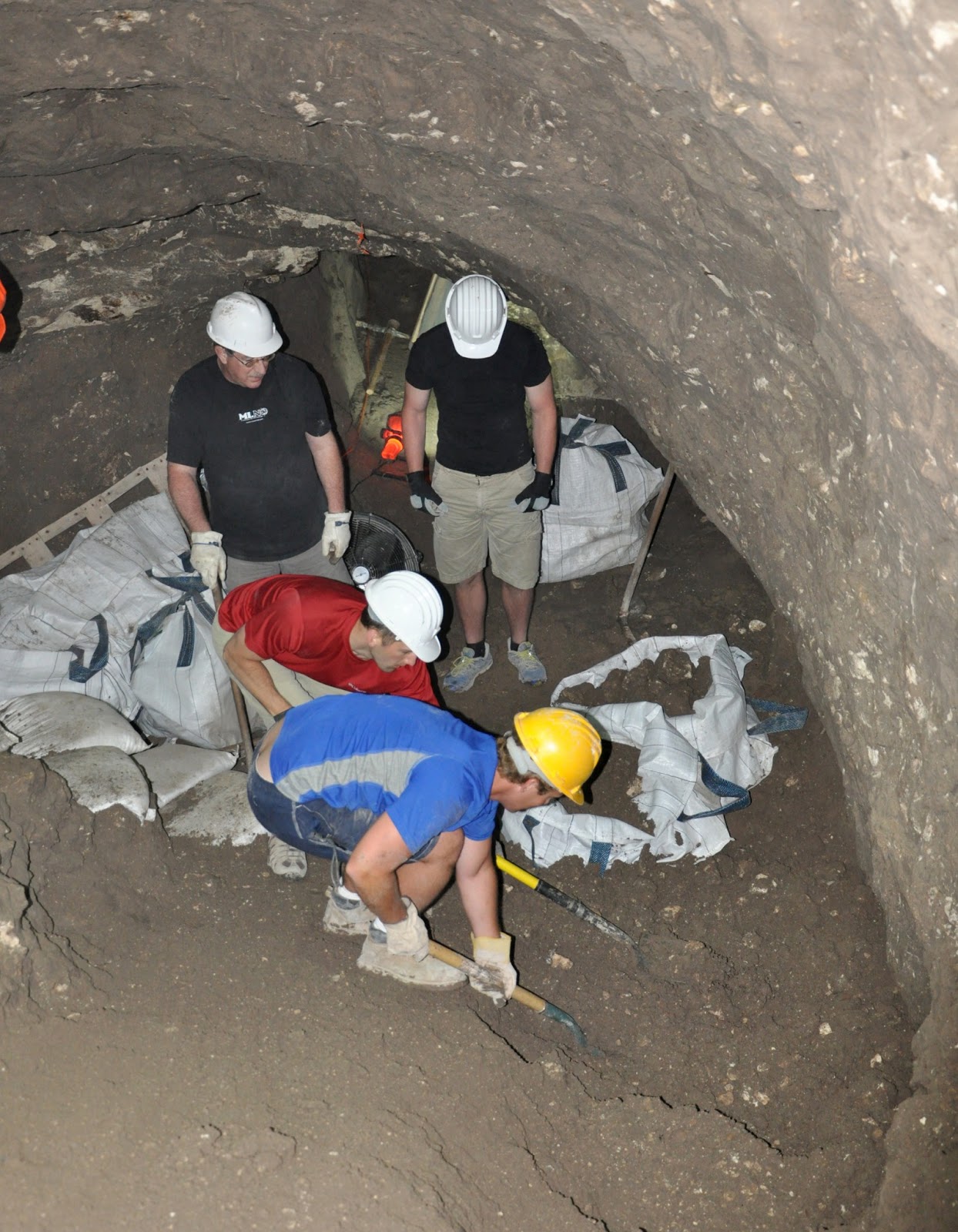Building on the momentum from Monday afternoon (May 27), the
team established routines and mastered individual jobs on May 28. And though
they were digging through difficult, stony material at the bottom of the
tunnel, the team pulled out 44 bags before lunch. Things slow considerably
after lunch and when the short afternoon session was complete, the daily bag
total reached 58. According to some of the veteran diggers at Gezer, the
material encountered today was some of the most difficult material to remove –
tightly packed cobble stones with very little dirt. No sign of that elusive
last step.
Conservation work continued today on the Canaanite gate/wall
area and the team’s work is beginning to show. Hopefully in the next few days
we will post before and after photos of their progress.
A small team of four begin digging test pits/probes inside
the cavern/cave. One probe was started last year late in the dig, a second was
started today. The goal is to take these meter square probes all the way to
bedrock. Today the probes yielded very little pottery. The one clearly datable piece
dated to the Iron Age.
Work will continue on all three fronts tomorrow – the step,
the wall conservation, and the cavern probes.
A Little Background
Hopefully the blog is building new readership this year. Since our newer followers may not know much about the Gezer Water System, some background may be in order. Here is a brief explanation of the water system:
Hopefully the blog is building new readership this year. Since our newer followers may not know much about the Gezer Water System, some background may be in order. Here is a brief explanation of the water system:
Many rock-hewn water systems have been discovered in Israel.
The water system in Gezer shares some characteristics with the other water
systems like the ones at Hazor and Meggido. These tunnels were built to provide
water for the inhabitants of a city during a siege. Even with the similarities,
the Gezer system is unique.
Measuring 12 feet wide by 24 feet tall, the Gezer system is
massive - much larger than the other water systems in Israel. The tunnel, cut
at the 39 degree slope, stretches over 130 feet to the bottom. Some archaeologists believe this water system was cut by the Canaanites. Others date it much later to the time of Ahab. One goal of the current expedition is to settle
this debate. So far, the team has not found conclusive evidence to support
either theory.
The Process for removing debris from the tunnel
Newer readers will also be interested in knowing how debris is moved from the bottom of the tunnel. The work is accomplished in five steps.
Newer readers will also be interested in knowing how debris is moved from the bottom of the tunnel. The work is accomplished in five steps.
- Three to five people use
picks and shovels to loosen the dirt, mud and rocks and from the tunnel.
- The debris is loaded into
large fabric bags. Each bag holds approximately 400 lbs. of material.
- At the mouth of the water
system a large winch is used to drag the bags up the steep grade of the
tunnel. Two people are needed to bring the cable down to the work area,
another person operates the winch.
- At the mouth a crane is
used to pull the bags up to the dump site. One person attaches the bag to
the crane hold and two are need to signal the crane operator.
- The bags are dropped at
the dump site where two people work to empty the bags. At the current dump
site another spotter is needed to facilitate the drop.
The Gezer Water System project is co-sponsored by the Israel Nature and Parks Authority and New Orleans Baptist Theological Seminary under the direction of Tsvika Tsuk, chief archaeologist at INPA, and Dan Warner, co-director of the Center for Archaeological Research at NOBTS.


No comments:
Post a Comment